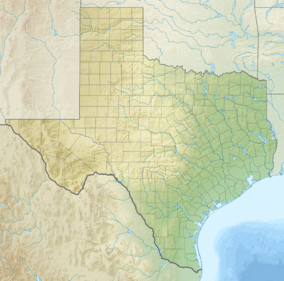| Martin Dies Jr. State Park | |
|---|---|
 Morning mist on Steinhagen Reservoir, Martin Dies Jr. State Park, Texas Morning mist on Steinhagen Reservoir, Martin Dies Jr. State Park, Texas | |
  | |
| Location | Jasper County, Texas; Tyler County, Texas |
| Nearest city | Jasper, Texas |
| Coordinates | 30°51′08″N 94°10′15″W / 30.85222°N 94.17083°W / 30.85222; -94.17083 |
| Area | 705 acres (285 ha) |
| Created | 1965 |
| Named for | Martin Dies, Jr. |
| Visitors | 87,766 (in 2022) |
| Operator | Texas Parks and Wildlife Department |
Martin Dies Jr. State Park is a 705-acre state park located along U.S. Route 190 on the banks of the Steinhagen Reservoir in Jasper and Tyler counties in Texas. The park is managed by the Texas Parks and Wildlife Department. The park consists of three units; Hen House Ridge Unit, Walnut Ridge Unit and Cherokee Unit. Cherokee Unit is a day use area only, whereas the other two units allow camping.
History
The state leased the park's land from the United States Army Corps of Engineers in 1964, and officially opened it as Dam B State Park in 1965, renaming it to honor State Senator Martin Dies Jr. the same year.
Activities
The park offers recreational activities such as paddling, fishing, swimming, hiking, cycling, and volleyball. The park's distance from major cities means dark skies and it offers stargazing events at times.
Nature

The park sits on the northern edge of the Big Thicket and south of where the Angelina River and Neches River meet. The two ecosystems contribute to the wide variety of plants and animals in the park.
Common mammals in the park include white-tailed deer, raccoons, Virginia opossums, nine-banded armadillos, and three different squirrel species. Red and gray foxes and bobcats make rare appearances.
The park is heavily forested. Loblolly, longleaf and shortleaf pines are abundant throughout the park. Bald cypress trees are found around the wetland areas. Water oak, southern red oak, sweet gum and Southern magnolia dot the landscape. Smaller trees and shrubs such American beautyberry, wax myrtle, yaupon holly grow under the larger trees.
References
- Christopher Adams. "What is the most visited state park in Texas? Here's the top 10 countdown". KXAN.com. Retrieved November 21, 2023.
External links
- Martin Dies Jr. State Park at Texas Parks and Wildlife Department
This article related to a protected area in Texas is a stub. You can help Misplaced Pages by expanding it. |
 | This article about a location in Jasper County, Texas is a stub. You can help Misplaced Pages by expanding it. |
 | This article about a location in Tyler County, Texas is a stub. You can help Misplaced Pages by expanding it. |